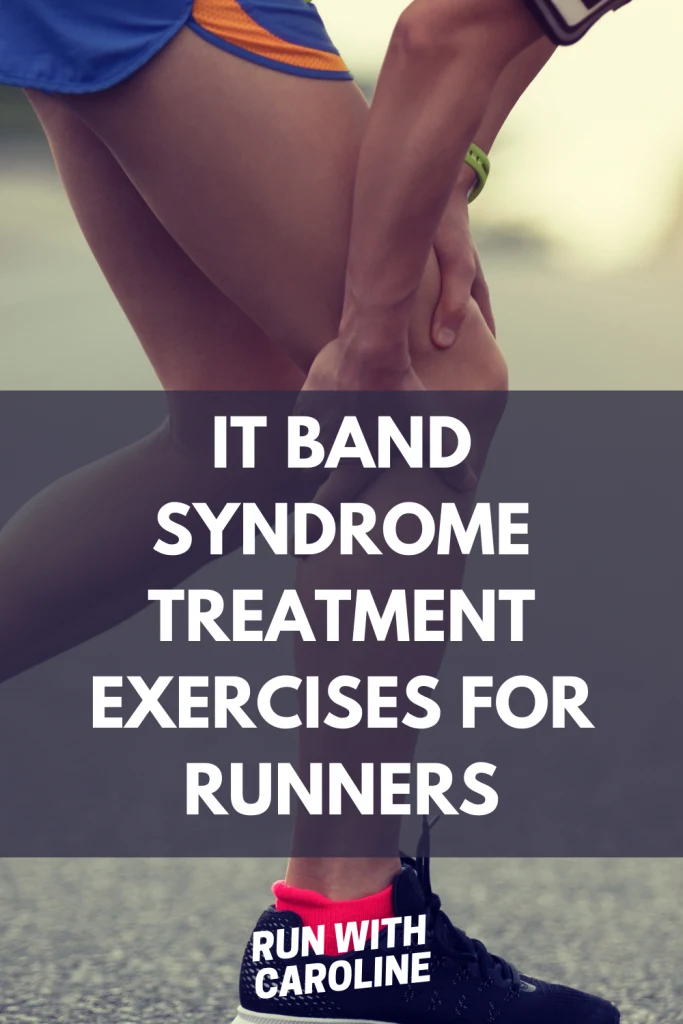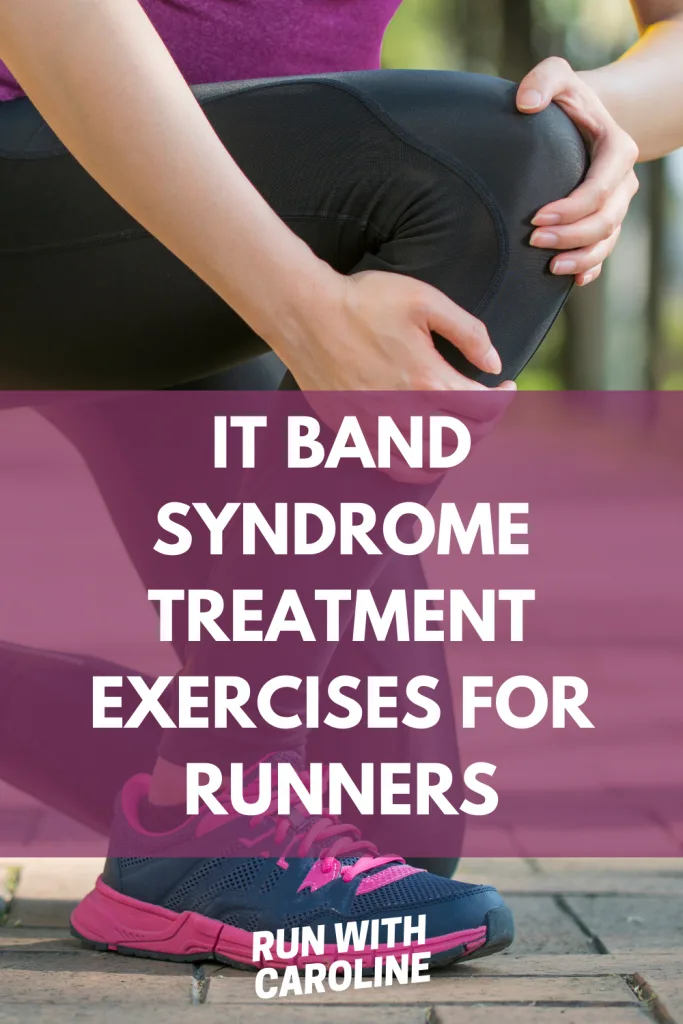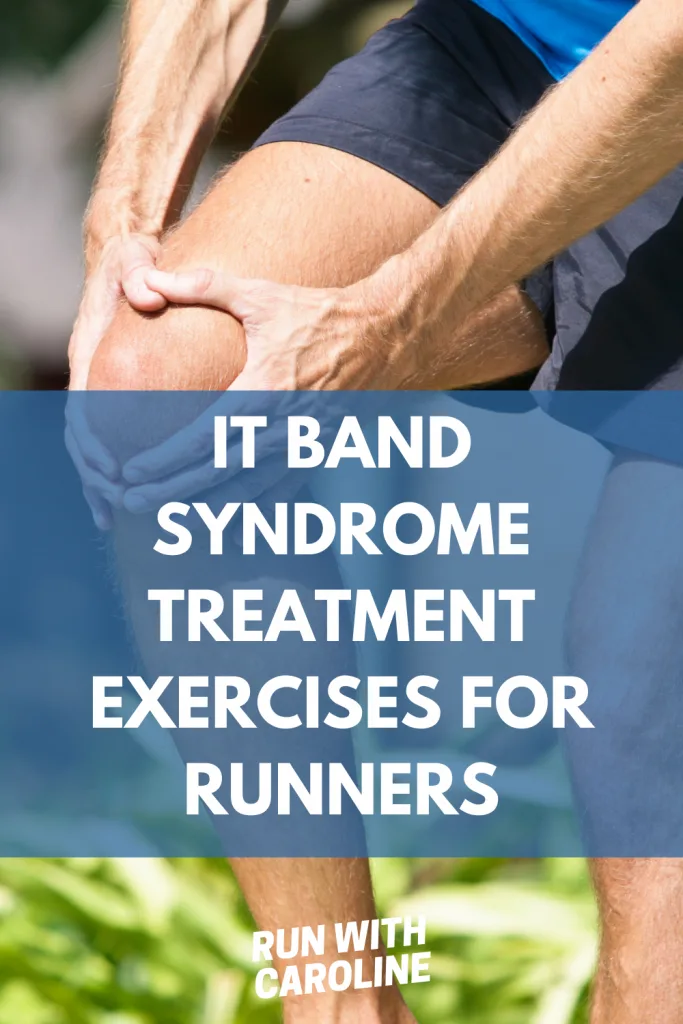Iliotibial band syndrome (ITBS or IT band syndrome for short) is one of the most frustrating injuries for runners.
It’s a typical overuse injury and is a common cause of lateral knee pain in athletes.
IT band syndrome was first seen in 1975 in US Marine Corps recruits during their training.
It’s not just a common injury for runners.
Hikers, skiers, soccer players, hockey players, basketball players and cyclists are also susceptible to IT band syndrome.
This is largely due to the rapid and prolonged cycling of the knee through flexion and extension in these sports.
The repetitive friction of the IT band during this flexion and extension motion leads to inflammation of the contact area of the IT band.
I have personally experienced IT band syndrome and it’s incredibly painful when it strikes.
The good news is there are ways to treat and prevent IT band syndrome for good.
In this guide we’ll explore:
- What is the IT band?
- What causes IT band syndrome?
- Who is at risk of developing IT band syndrome?
- What are the signs and symptoms of IT band syndrome?
- How to treat IT band syndrome
- How to prevent IT band syndrome
- IT band stretches and exercises for runners
- IT band pain: 7 training mistakes to avoid
Ready?
Let’s go!

What is the IT band?
Your IT band (or iliotibial band) is a thick band of connective tissue that runs from the outside of your hip to the outside of your knee.
It helps to stabilise and move your knee joint, so when it isn’t working or when it becomes inflamed, you experience knee pain.
The pain typically occurs on the outside of your knee.
Many runners mistake this pain for a knee injury or runner’s knee.
According to Molly over at All About Marathon Training: “Inflammation will occur any time that you place a huge amount of stress on your body (whether mental or physical such as running a marathon).
Therefore, it is something that we want to be thinking about as a runner.”
Studies have also shown that IT band syndrome is one of the most common causes of lateral knee pain in runners and cyclists.
The incidence ranges from 1.6% to 12% in runners and other repetitive motion athletes.
Interestingly, it is more common in women than men and you are more likely to suffer with IT band syndrome if you lead an active lifestyle.
Sedentary individuals seldom experience IT band syndrome.
Related: Hip pain after running: 8 causes + how to fix it
What causes IT band syndrome?
IT band pain is a common overuse injury.
It is caused by excessive friction from the IT band being overly tight and rubbing against the bone.
The rubbing eventually causes inflammation and that’s when you start to experience pain when you move your knee.
Here is a full list of common causes of IT band pain:
- Overtraining
- Running too many miles
- Running on surfaces that cause your leg to turn inwards (e.g. running downhill or on uneven surfaces)
- Running in worn out shoes (as these can cause the leg to roll inwards)
- Sitting for long periods in a seated position with bent knees
Related: 7 glute strengthening exercises for runners

Who is at risk of developing IT band syndrome?
IT band pain is common in the running community, but some people are more at risk of getting it than others.
According to one study, the following anatomical factors can increase the tension of the IT band:
- Internal tibial torsion
- Hip abductor weakness
- Excessive foot pronation
- Medial compartment arthritis
It seems to only happen in some runners (for reasons we don’t yet know), but there are risk factors for developing IT band syndrome:
- Prior IT band injury or tightness
- Weak hips and/or glutes
- Weak abdominal muscles
- Weak knee flexors and/or hip abductors
- Uphill running
- Lack of flexibility
- Sitting for long periods of time
- Different leg lengths
- Bow legs
- Flat feet
Related: Shin splints when running: Exercises, symptoms and treatment
What are the signs and symptoms of IT band syndrome?
As I mentioned earlier, IT band pain causes pain on the outside of the knee – affecting one or both of your knees.
At first you may only experience pain only when you exercise, especially while running.
After time, however, the pain may become more persistent, continuing even after when you’ve stopped exercising.
I remember the IT band pain I felt during mile 11 of a half marathon and it was soul-destroying.
I had trained for months for the half marathon and the pain literally stopped me in my tracks during the home strait of the run.
At the time I was devastated but I knew I had to stop running to avoid making the injury worse.
One of the key differences between a knee injury and IT band pain is swelling.
You won’t experience any noticeable swelling with IT band syndrome, whereas a knee injury usually causes swelling.
If in doubt, or if your injury is causing you a lot of pain, I would always suggest you see your GP or a physio and get their professional opinion.
Here are some common signs and symptoms of IT band syndrome:
- Pain on the outside of your knee
- An aching or burning feeling that sometimes spreads up the thigh to the hip
- Pain that tends to be worse right after you strike your foot
- Pain that starts at the end of your workout
- Pain when going up and down stairs
- Pain when walking
Sleeping with IT band syndrome can also be uncomfortable.
Related: How to prevent knee pain when running: 5 actionable tips

How to treat IT band syndrome
As soon as you start to feel pain, stop running and rest your leg.
When you get home, follow the RICE method:
- Rest
- Ice
- Compression
- Elevation
Rest and ice the affected area for at least one week following the onset of pain.
As with any running injury, the first point of call is rest and recovery.
Lower your weekly mileage or, even better, stop running altogether.
If you continue to run whilst still experiencing pain, you risk turning it into a chronic injury.
Other treatments for IT band include taking nonsteroidal anti-inflammatory drugs (NSAIDs) like ibuprofen.
Stretching daily and strengthening key running muscles like your glutes and hip muscles are also great treatment options.
At the end of this guide I’ll share IT band stretches and exercises for runners.
Related: 5 essential hip flexor stretches for runners
How to prevent IT band syndrome
The key to IT band syndrome treatment is putting things in place to stop it from occurring in the first place.
As the age old saying goes, prevention is better than the cure.
According to a 2015 study, neuromuscular re-education, strengthening interventions and addressing contributing factors to IT band syndrome.
The study adds that training errors, shoe wear, running surface and programme design were all utilised to treat IT band pain in two patients.
IT band syndrome is a common overuse injury, so if you regular experience issues, it may be a sign to change your training routine.
You can still train consistently, but train smarter.
Here are some tips to help prevent IT band syndrome:
- Warm up before each run
- Cool down after each run
- Run on even surfaces
- Avoid sudden increases in mileage
- Avoid overtraining
- Stretch daily
- Foam roll (also known as myofascial release)
- Strengthen muscles like the glutes and hip muscles
- Replace your running shoes regularly
- Do complementary activities like yoga and acupuncture
- Go for a sports massage
Related: 5 important things to do when you have a running injury

IT band stretches and exercises for runners
IT band stretches
Here some stretches to include in your cool down and on days in between your runs to help prevent IT band pain:
- Standing IT band stretch
- Lying gluteal stretch
- Forward fold with crossed legs
- Seated spinal twist
- Cow face pose
IT band exercises
IT band syndrome exercises like glute and hip strengthening exercises are key to treat and prevent IT band syndrome.
Your glutes play an important role to propel you forward and swing your leg bag.
By strengthening your glutes and hips, this will not only help you become a faster and stronger runner, but more importantly, help the recurrence of IT band.
Here are my favourite IT band syndrome treatment exercises for runners to help prevent IT band pain. Do 8-12 reps and three rounds with 1-2 minutes of rest in between each round.
Aim to include one glute strength workout each week in your training routine.
- Hip adduction/abduction with resistance band
- Side lying hip abduction
- Clams with resistance band
- Heel drops
- Hip bridge with resistance band
- Lateral band walks
- Side plank
IT band syndrome exercises to avoid include squats and lunges because these flex/bend the knee between 30 to 90 degrees.
This can be painful on the outside of the knee where the IT band attaches.
While squats and lunges are not completely off the table, you may consider taking a break from these exercises depending on the severity of your symptoms.
IT band pain: 7 training mistakes to avoid
Now you know how to treat and prevent IT band syndrome, let’s look at training mistakes to avoid.
IT band pain affects many runners, as well as cyclists and hikers.
People that get IT band pain are normally those that exercise regularly.
However, there are times when IT band pain occurs due to mistakes in training. The good news is these can normally be corrected!
Here are some training mistakes to avoid:
#1 You forget to warm up and cool down
A warm up and cool down are essential to help prevent common running injuries from occuring and reduce muscle soreness after a run.
Focus on doing dynamic exercises in your pre-run warm up and static stretches in your post-run cool down.
#2 You push yourself too much past your limits
Whilst achieving your running goals is important, if you regularly push yourself out of your comfort zone, you risk overtraining, burnout and injury.
#3 You don’t prioritise rest and recovery
Rest and recovery is integral to any training plan, no matter the distance you’re training for.
Ensure you schedule at least two rest days in your training plan so your body has adequate time to recover in between runs.
Nutrition and sleep are also key parts of any recovery routine.
#4 You wear poorly fitted running shoes
Ensure you wear the right pair of running shoes, especially if you’re running regularly week in, week out.
It’s also important you replace your running shoes on a regular basis.
If you run regularly (e.g. roughly 20 miles per week), you’ll need to replace your shoes every 4 to 6 months.
Worn out running shoes can cause your foot to roll inwards.
#5 You train on uneven surfaces
According to a 2015 study, running on uneven surfaces increases energy expenditure, variables in your stride and leg stiffness compared with running on even terrain.
The study even found that when running on uneven terrain:
- Energy expenditure increased by 5%
- Step width and length variability increased by 27% and 26%, respectively
- Positive and negative ankle work decreased by 22% and 18% respectively
- Leg stiffness increased by 20%
Whilst running on uneven terrain has its benefits, it also poses some key challenges which can adversely affect your biomechanics.
#6 You take sudden jumps in your training
As part of any well-rounded training plan, you will see an incremental increase in weekly mileage.
The general rule of thumb, depending on the distance you are training for, there should be a 5-10% increase each week.
If you take sudden jumps in mileage, this can increase the risk of injury.
#7 You have poor running form
Proper running form is essential for any runner.
The key components of running form are: posture, arm swing, cadence, footstrike and core strength.
When you run using improper running form, you increase the rate of injury.
You can read more about the key components of running form in my running form guide.
- 5 things I wish I’d known before returning to running - March 3, 2024
- Running 20 minutes a day: Benefits + how to start - January 27, 2024
- How to run your first 2 hour half marathon - January 16, 2024
